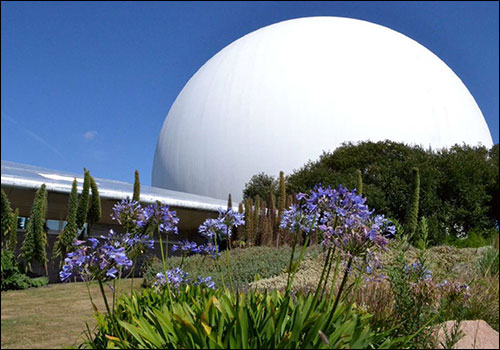Cité des télécoms (Telecom City), a French museum devoted to the science and history of telecommunication, is installing an active RFID ultra-wideband (UWB)-based solution from proximity technology company Ticatag to make content about exhibits more interesting, accessible and interactive for visitors. The system is expected to be taken fully live this summer, with 32 devices known as Ticatag beacons installed around the museum, as well as 10 tablets running an app designed to display information based on the location of Ticatag battery-powered tags worn by visitors. The Ticatag beacons and tags are made with DecaWave‘s UWB DWM1000 transceiver modules.
The deployment follows a pilot conducted last year to test whether the technology could provide digital content to museum visitors with minimal efforts required by those individuals. Those testing the system were staff members and a limited number of members of the public.

Cité des télécoms, located near the northwestern tip of France, is the largest museum in Europe to be dedicated to telecommunications. It showcases the technology’s history from telegraphs to the present, and also displays and demonstrates how telecom technology is currently used. Exhibits are located within a 3,000-square-meter (32,300-square-foot) area, with 80,000 visitors passing through the museum annually. With exhibits and programs aimed at educating young and old visitors alike, the museum sought a way to reach out to those visitors digitally so that they could more easily learn more about the exhibits via videos, for instance, rather than having to read printed placards.
The museum considered several technology options. It had already installed Near Field Communication (NFC) passive RFID tags around its exhibits so that visitors could use their NFC-enabled smartphones to collect data by reading tag ID numbers. However, the museum reports, many visitors found the NFC technology difficult to use.
Instead, the museum liked the idea of a solution that didn’t require visitors to do anything (such as tap a tag), while it could also provide the service to those with disabilities who may not be able to reach tags in order to tap them with their phones.
The museum originally installed Ticatag’s Bluetooth beacons, says Yann Mac Garry, Ticatag’s CEO, and provided each visitor with a tablet running an app that would capture a beacon’s ID number and, based on that ID, display information related to the exhibit closest to that beacon. The museum found, however, that Bluetooth beacon technology didn’t provide the location granularity it needed when multiple exhibits were in close proximity to each other. Therefore, it opted to try a version of the Ticatag beacon with DecaWave’s DWM1000 module built into it, explains Mickael Viot, DecaWave’s marketing manager. The trial found that the system could identify a visitor’s location at a level of about 20 centimeters (7.9 inches).
During the trial, each participant received a battery-powered ID tag and Google‘s Galaxy Note4 tablet. The tag, made with the DWM1000 module, measures 23 millimeters by 13 millimeters by 2.9 millimeters (0.9 inch by 0.5 inch by 0.1 inch) and was attached inside the tablet’s cover. The tablet was running an application that was developed by Ticatag in conjunction with Cité des télécoms. The museum employed French digital agency Mazedia to provide the content design, and to enable the management of the video content software.
As a user walked around the exhibits, his or her tag received signals transmitted by the beacons, and forwarded the beacon IDs and other transmission-related data to the tablet, via a Bluetooth connection. The DecaWave software residing in the museum’s app calculated the visitor’s location, based on that data, to within about 2 meters (6.6 feet). When the user came within close proximity of a specific exhibit, as determined by the DecaWave software, the museum app displayed content related to that location. He or she could then select prompts to watch a video, listen to an audio presentation or view pictures of text files about that exhibit. Audio and video content was all stored locally on the tablet, in order to avoid network issues. However, administration and configuration of the beacons was carried out via DecaWave’s content-management platform on its server.
Once the installation is taken live this summer, the museum will have installed 32 Ticatag beacons around a 500-square-meter (5,380-square-foot) area that it deemed was best-suited for the system (other sections, such as the “Optical Illusions” exhibit, feature content that does not lend itself well to providing more information on tablets). Initially, the museum will have 10 tablets available for use by visitors, though that number could increase in the future.
Ticatag is now marketing this solution, known as Ti’Beacon HD, to other museums or organization that require precise location data. “I would say that Cité des télécoms appears as an early adopter of the technology and our product,” Mac Garry states. The company is now offering a package of four beacons, as well as one tag. He that estimates users will need about 15 minutes to install a system of that size. “Museums are clearly a market, but we are confident that we will find others,” he says, citing logistics as one example.



